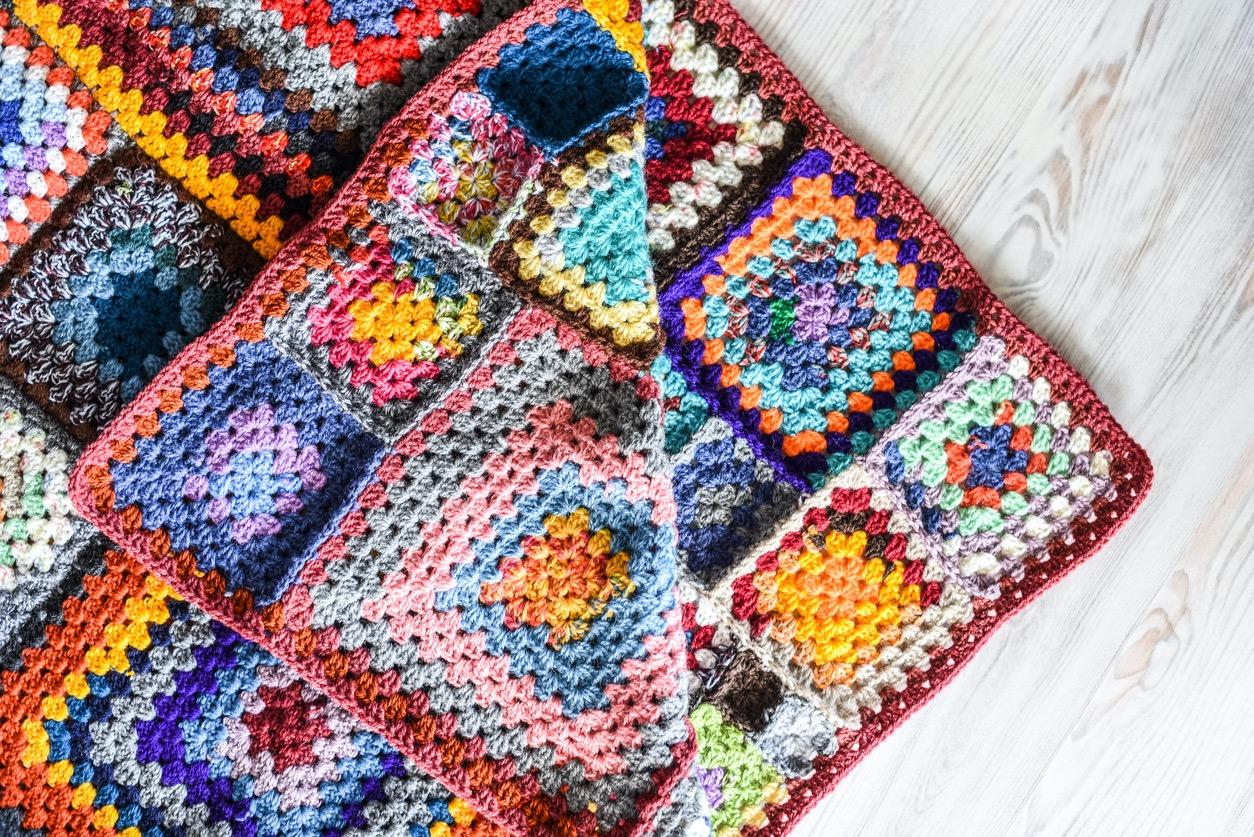How to Wash Your Precious Crochet Blanket Without Ruining It: A Detailed Guide
Published Jan. 2 2024, 4:17 p.m. ET

The Gist:
With the right information, washing a crochet blanket is simple.
It’s crucial to consider what products to use and the type of fiber the blanket is made with before washing it.
To get your blanket nice and clean, you can handwash it or throw it in the washing machine.
So, you’ve finally finished that crochet blanket you’ve been working on for ages, and now it’s time to wash it. The idea of washing something that seems so fragile might be scary, but with the right instructions, it’s totally manageable.
Keep reading to learn more about how to wash a crochet blanket, what cleaning products to use, and what to consider before starting.
Here’s what you will need to wash your crochet blanket:

You can wash a crochet blanket by hand or in a washing machine. For the most part, it doesn’t matter which method you try as long as it’s appropriate for the type of fiber the blanket is made of.
The best rule of thumb is to follow the care instructions printed on the yarn label, according to The Spruce. This typically guarantees the best results.
If you no longer have the label, it’s usually a good idea to handwash all wool, machine wash linen, cotton, and ramie on a delicate or gentle cycle, and throw synthetic yarn types (like acrylic) in with your regular clothes.
Another important thing to consider before washing your crochet blanket is the type of cleaning products you will use. In most cases, it’s best to use a mild detergent. If you want to be extra careful, you can find a cleanser that’s specifically made for certain fibers, according to Easy Crochet.
Here's how to hand wash a crochet blanket:
Handwashing your crochet blanket might not be easy peasy or convenient, but it will definitely give you peace of mind. This method gives you more control over the results.
To get started, you’ll need something to wash your blanket in — a sink, bathtub, or even a bucket, depending on the size. You will also need detergent and towels.
Begin by filling your cleaning vessel with cold water and your detergent of choice. Place your blanket in the water and gently move it around, allowing the soap to spread evenly. Avoid any harsh scrubbing or wringing, as these actions could damage the item.
Once it seems like the blanket is clean, rinse it in cold water until it’s completely free of soap. Remove the excess water and then transfer the item to a towel and roll it up — multiple towels might be required if your item is larger. Press firmly while rolling to absorb as much water as possible.
Grab a few dry towels or a sheet to dry the blanket and arrange them on a flat surface. Place it on top of the towels and wait several hours, turning it every so often. After some time has passed, you can begin to re-shape the blanket by pulling on the stitches until they are in the correct position.
Continue to let the blanket dry — this could take longer than 24 hours. To speed up the process, use a fan or open a few windows to create extra airflow.
How to wash your crochet blanket in the washing machine:
Not everyone has the time or energy to handwash their crochet projects, even if it might be the better option at times. Luckily, plenty of people have thrown their beloved blankets into the washer and lived to tell the tale.
If you want to throw your blanket in the washing machine, there are just a few rules you should try to follow. First, always wash it in cold water and on a delicate cycle. And if you can, try to use a machine that doesn’t have a central agitator.
To protect your project even more, you can put it in a large delicates bag — this will help with tangling.
Once it’s done in the washer, technically, you can put it in the dryer. While it’s best to air dry when possible, that’s not always the most time-friendly option. If you must use a dryer, always use the lowest heat possible to help avoid any melting.